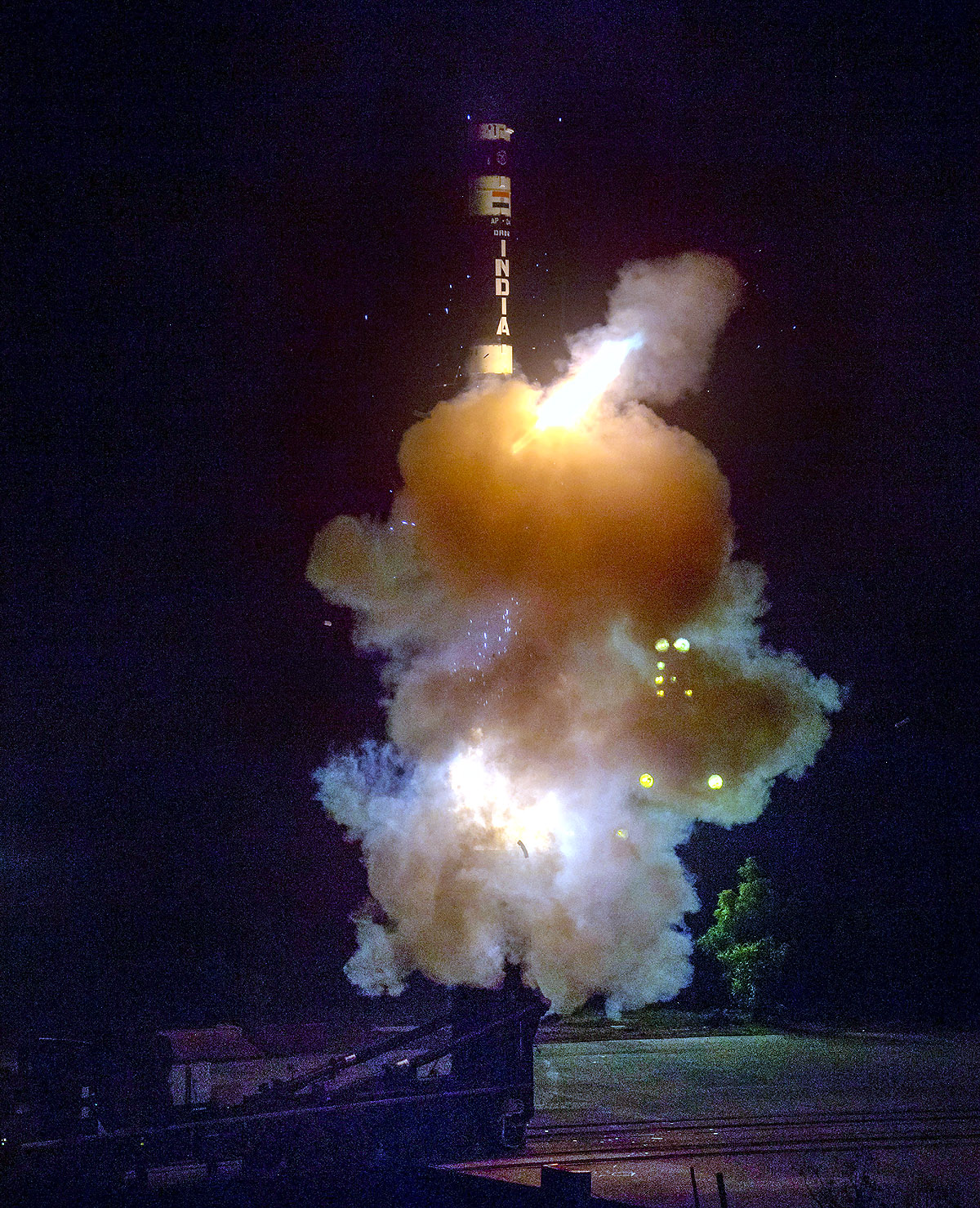The Defence Research and Development Organisation (DRDO) of India has successfully carried out the night-time test of the Agni-Prime missile, a nuclear-capable ballistic missile, off the coast of Odisha on the night of April 3, 2024. Named Agni-Prime, this missile is lighter due to its advanced materials and will replace the earlier Agni-I variant.
This missile represents the forefront of next-generation warfare. The nocturnal test was conducted at Dr. A.P.J. Abdul Kalam Island. Throughout its trial, the missile met all its benchmarks, consolidating its place among the Agni series as a particularly lethal, contemporary, and medium-range ballistic projectile.
Read More:

Source: aajtak
The missile will be operated under the Strategic Forces Command of India. Also known as Agni-P, it can be equipped with a Multiple Independently targetable Re-entry Vehicle (MIRV) warhead, making it capable of striking numerous targets simultaneously.
Capable of carrying warheads weighing 1500-3000 kg
Agni-Prime is capable of deploying high-yield explosives, thermobaric, or nuclear payloads. The missile, which is rocketed by a two-stage motor, can carry a warhead weight ranging from 1500 to 3000 kg. Weighing approximately 11,000 kg, this missile is powered by solid fuel.
Read More: North Korea tests world's most dangerous weapons, creating fears with hyper-sonic missile launch

Source: aajtak
Third stage signifies the adversary's end
The third stage, known as the Maneuverable Re-entry Vehicle (MaRV), allows for precision targeting of enemy sites from a distance. Launched from a BEML-Tatra Transporter Erector Launcher, this missile was developed as a response to China's creation of DF-12D and DF-26B missiles, positioning the Agni-Prime as a strategic Area Denial Weapon.
Agni-Prime is lighter than its predecessors
While Agni-I was a single-stage missile, Agni-Prime advances with a dual-stage configuration and also lighter than previous versions like the Agni-IV, which had a range of 4000 km, and Agni-V with 5000 km range. Agni-I was first tested in 1989 and incorporated into the military in 2004 with a range of 700-900 km. Agni-Prime will now take its place.




